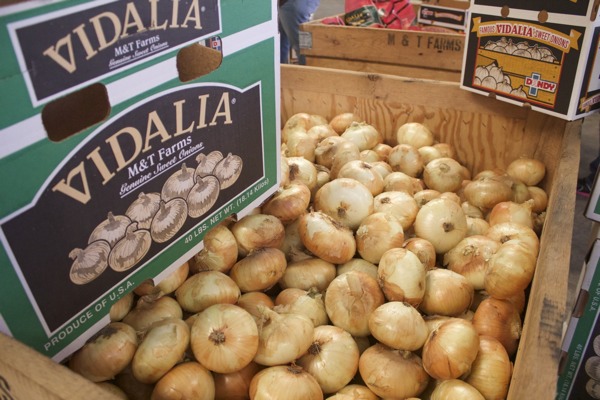
Vidalia onion farmers are expected to begin planting the crop this week. Disease management is already on the minds of Georgia growers, following last year’s tough season with bacterial diseases, according to Chris Tyson, University of Georgia Extension Area Onion Agent at the Vidalia Onion & Vegetable Research Center in Lyons, Georgia.
“We had some bacterial disease issues this past season,” Tyson said. “That’s one of those things, that’s something that really didn’t show its head until the end of the season. It was hard to foresee that.
“Bacterial diseases are tough to control. They’re probably the most challenging pest we have in onions period. It’s a big deal for everybody.”
Systems-Wide Approach
According to the UGA Vidalia Onion Extension Blog, bacterial diseases cause more economic losses in Vidalia Onions than any other pest. Tyson recommends growers take a systems-wide approach, which includes fertility, variety selection, maturity, weed control, insect control, bactericides and post-harvest management.
“With it fresh on their memory like that, they’re probably going to take into consideration anything they can do; any management strategies to help with that. That could be a lot of things. It could be variety selection to a certain extent or what maturity class of onions they try to grow,” Tyson said. “Sometimes for instance, typically, bacterial diseases that we see at harvest are worse the later you get in the season, so sometimes, earlier maturing varieties may miss some of that disease pressure.”
Center Rot
According to a UGA Extension publication highlighting bacterial diseases, by Bhabesh Dutta and Ron Gitaitis in the Department of Plant Pathology, center rot remains a huge issue for onion producers. Foliar symptoms initially consist of water-soaked lesions that cause the leaf to become bleached and blighted. Center rot management requires an integrated approach that aims at reducing potential sources of inoculum to count the spread of the bacteria.
Unfortunately, there are not any commercially available onion cultivars that are resistant to the disease.
“This past year we saw a good bit of center rot but we also saw some other bacterial disease that looks very similar to center rot that the management strategies would be very similar to that too,” Tyson said.
Growers are advised to plant early-maturing or mid-maturing cultivars. Thrips vector the spread of the bacteria among plants and fields. Controlling thrips pressure can be a successful management option. Weed management is also recommended. By reducing weeds, growers can potentially reduce the initial inoculum.
Sour Skin
Sour skin was also worse last year for producers. It is usually more of a problem during harvest in the latter part of the growing season. As it thrives in warm conditions, symptoms can manifest earlier in the season depending on temperature. The disease can progress from the upper foliage to the leaves in the lower part of the plant and then to the bulb’s outer scales.
Bulbs that are infected with sour skin usually have an acrid, sour odor and other foul odors that are associated with secondary organisms. Bulbs will turn reddish-brown to brown in color over time, as the tissues rot and copious amounts of fluids are produced.
Crop rotation may help with sour skin management. Avoid using overhead irrigation near harvest season will also reduce yield losses. Also, tactics that reduce the chances of irrigation becoming contaminated with sour skin bacteria will be beneficial.
Irrigate from wells or clean ponds that are weed-free can reduce inoculum levels.









